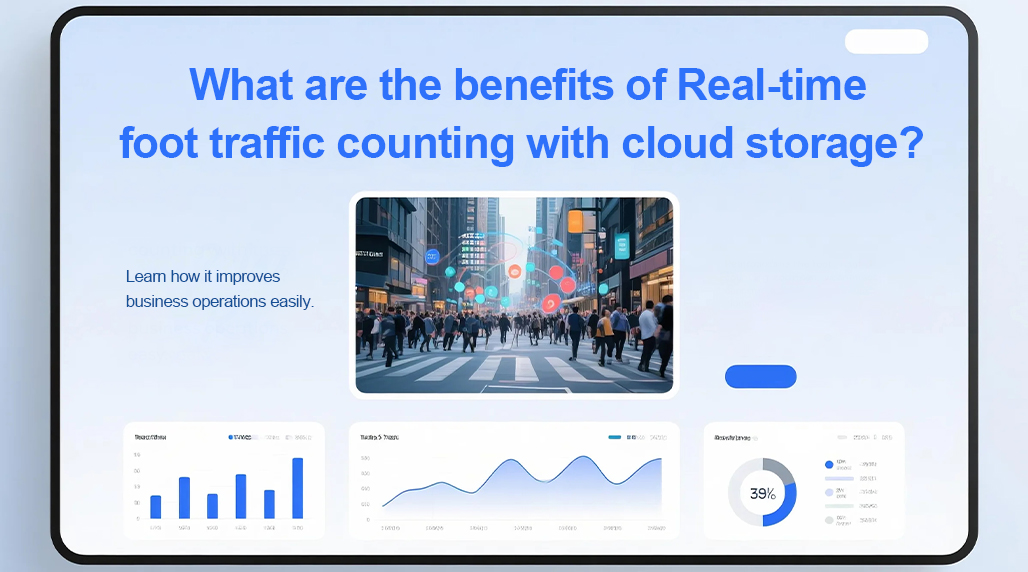Alright, let me walk you through this little project I did recently. I wanted to figure out a way to count people passing by a specific spot, you know, foot traffic, but see the numbers pretty much as it happened. And I didn’t want the data stuck on some local device, I wanted it up in the cloud so I could check it whenever.
Getting Started – The Idea
So the goal was simple: count people in real-time, store counts online. Sounds easy, right? Well, like most things, it took some fiddling. First, I had to decide how to actually see the people. I had an old Raspberry Pi gathering dust, so that seemed like a good brain for the operation. Cheap, small, good enough.
Figuring Out the ‘Eyes’
For the ‘eyes’, I thought about different sensors. Passive infrared (PIR) sensors are common, but they just tell you if something moved, not really great for counting distinct people accurately, especially if multiple people pass close together. I ended up grabbing a basic USB webcam. Nothing fancy, just something the Pi could handle.
Hooking up the camera was straightforward. The tricky part was telling the Pi how to interpret what the camera saw. I needed software for that.
Making the Pi ‘Count’
I decided to use Python, ’cause I’m comfortable with it and there are tons of libraries. I played around with some computer vision stuff. Initially, I tried some complex object detection models, but honestly, it was overkill for just counting people passing a line and bogged down the little Pi.
So, I simplified. I wrote a script that basically looked for significant motion changes within a specific area of the camera’s view – like drawing an invisible line across the doorway. When enough ‘motion’ crossed that line in one direction, increment the counter.

- Trial and Error: This part took the most tweaking. Setting the sensitivity just right was key. Too low, it missed people. Too high, a bird flying past outside the window or even changing light conditions could trigger a false count. Had to add some logic to ignore really small movements or movements that didn’t cross the whole ‘line’.
- Direction Matters: I also added a basic check for direction, so I could potentially count ‘in’ and ‘out’ separately, though I mostly focused on total traffic passing the point.
Sending Data to the Cloud
Okay, so the Pi was counting (more or less reliably). Now, how to get those numbers online? I needed cloud storage. I looked into a few options. Some big cloud database services seemed too complicated for just storing a timestamp and a number every minute or so.
I settled on using a simple cloud platform that offered an easy way to send data using basic web requests (like HTTP POST). Many cloud providers have something like this, often called serverless functions or simple database services.

The process looked like this:
- Every minute (or whatever interval I set), the Python script on the Pi would grab the latest count.
- It would package this count along with the current timestamp.
- Then, it would make a secure web request (HTTPS POST) to a specific endpoint URL provided by the cloud service.
- This endpoint was linked to a super simple function on the cloud side that just took the data and dumped it into a basic cloud database table – just timestamp and count.
Setting up the cloud part involved creating the database table (or collection) and setting up the API endpoint or function. Had to handle authentication too, usually with some API key or token that the script on the Pi used when sending data, so only my device could add data.
Seeing the Results
And that was pretty much it! The counts started appearing in the cloud database almost immediately after the Pi sent them. I could log into the cloud service console and see the raw data table filling up.
To make it a bit more user-friendly, I quickly threw together a very basic web page that fetched the latest data from the cloud database and displayed the count. Nothing fancy, just a number that updated automatically. It was pretty satisfying seeing the count tick up in near real-time on my phone while watching people walk past the camera sensor.
Was it Perfect?
Heck no. This was a homebrew setup. Accuracy wasn’t 100%. Weird lighting, people walking very close together, sometimes even a large pet could occasionally fool it. Network connectivity for the Pi was also a factor – if Wi-Fi dropped, counts wouldn’t get sent until it reconnected. Sometimes the Pi needed a reboot.
But for a practical experiment to get real-time-ish foot traffic data into the cloud, it worked surprisingly well. It was a fun exercise in connecting a physical sensor through a small computer to a cloud service, and seeing the data flow end-to-end.
